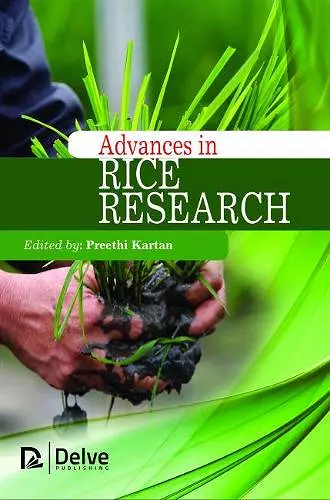Advances in Rice Research
Format:Hardback
Publisher:Arcler Education Inc
Published:28th Feb '18
Should be back in stock very soon

Rice is one of the major crops in the world and provides the staple food for over half of the world’s population. Rice (Oryza sativa) belongs to the genus Oryza, which includes more than 25 wild species either perennial or annual, which are either diploid or tetraploid. Indica and japonica rice are two main subspecies of Asian cultivated rice. Indica rice is mainly cultivated in tropical and subtropical environments, whereas japonica rice is grown mainly in more temperate environments. Successful rice cultivation is intimately linked with hormonal signaling and proper responses to biotic and abiotic stresses, which can be bacterial or fungal disease, and salt and drought stresses. Both the rice varieties have clearly diverged in their morphological characteristics, agronomic traits and physiological and biochemical features, as well as in yield, quality and stress resistance.
The challenge is to develop technologies that lead to the increased rice production commensurate with the increasing world population. There is a need to develop strategies providing long- lasting disease resistance against a broad spectrum of pathogens and giving protection to the crop for a longer period of time over a broad geographic area, for sustainable rice production in the future. Rice blast, caused by pathogenic fungi Magnaporthe oryzae represents a major biotic constraint over rice production and yield. Then the rise in population has put the burden on rice consuming countries for more production, and it is estimated that we will have to produce 40% more rice in 2030 (Khush, 2005). Moreover, unreliable and regular rainfall is the biggest hurdle encountered by farmers esp in developing countries where access to irrigation is minimal.
Rice is a model crop for genetic and breeding research with small genome and high density molecular map. In early 1980s, to meet the demand of the growing world population, conventional breeding methods took a make shift and combined achievements in rice biotechnology based on recombinant DNA technology and lead to the birth of `transgenic rice’. Over the last few decades, a significant progress has been made in the development of new and efficient transformation methods for the introduction of novel genes into rice genome to confer novel traits such as improving nutritional qualities, resistance to pests etc. Delivery of foreign DNA to rice...
ISBN: 9781773611112
Dimensions: unknown
Weight: unknown
275 pages